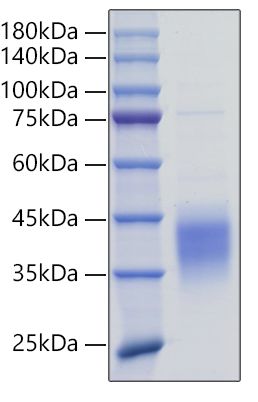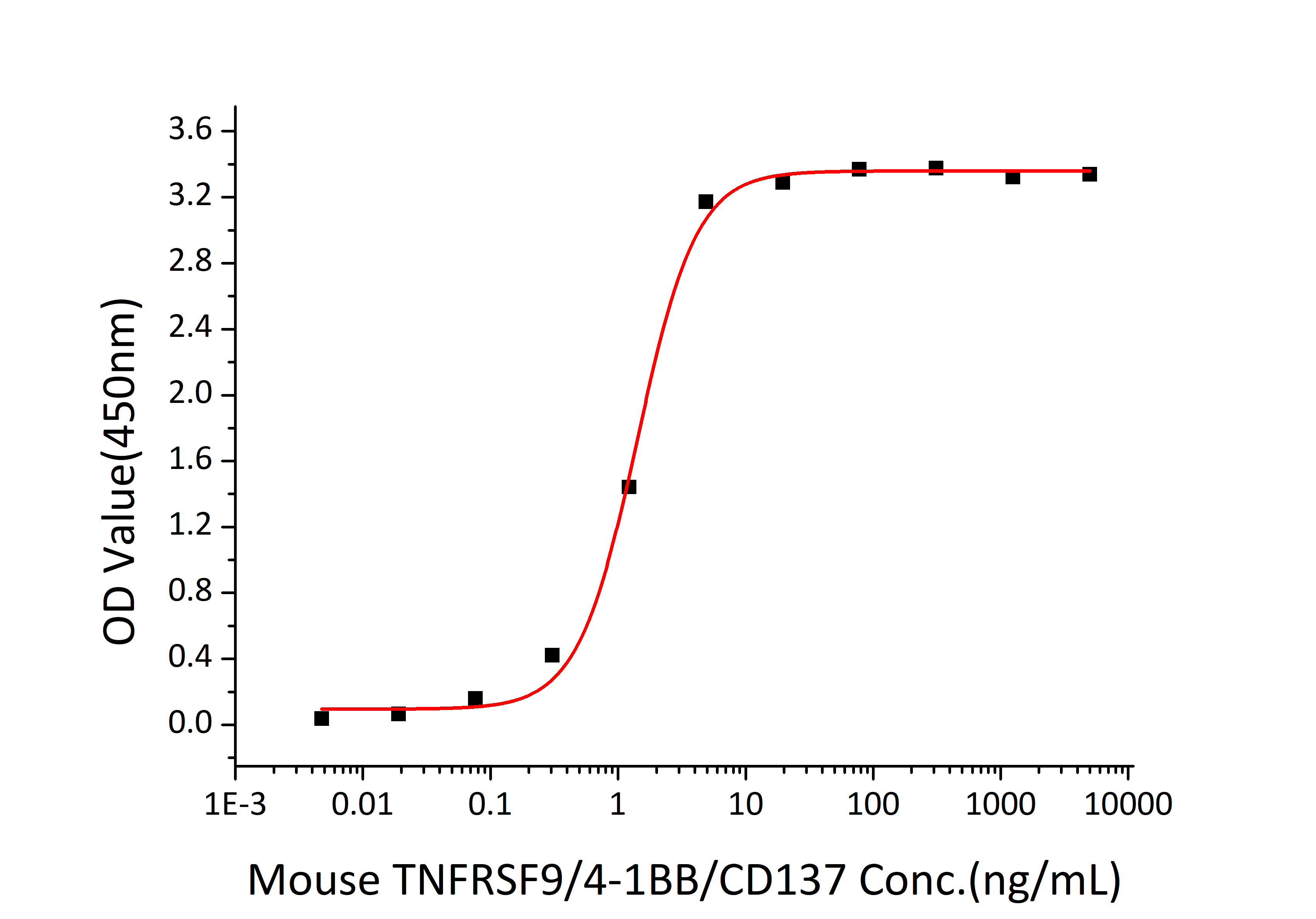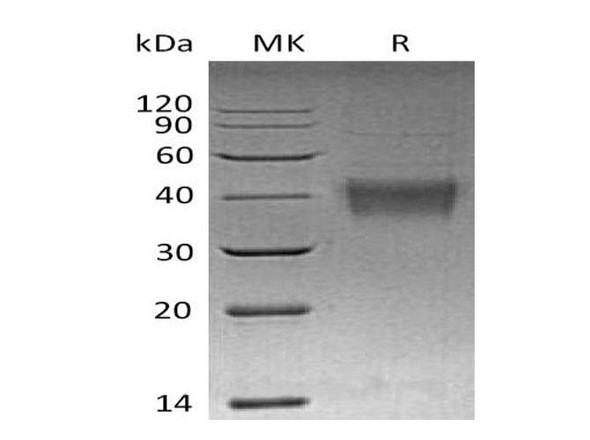Description
Recombinant Mouse TNFSF9/4-1BB Ligand Protein
The Recombinant Mouse TNFSF9/4-1BB Ligand Protein is a high-quality recombinant protein designed for murine biological research applications. This protein serves as an essential reagent in mouse model studies, comparative immunology research, and preclinical therapeutic evaluations, enabling scientists to investigate TNFSF9/4-1BB Ligand biology and its relevance to human disease mechanisms through translational research approaches.
This product (SKU: RPCB0775) is produced using HEK293 cells and features a N-His tag for convenient detection and purification. The protein exhibits a calculated molecular weight of 23.80 kDa with an observed molecular weight of 35-45 kDa under denaturing conditions, achieving ≥ 95 % as determined by SDS-PAGE.. Functional bioactivity has been validated through rigorous quality control assays, confirming its suitability for demanding research applications.
Key Features
| High Purity by Affinity Chromatography | |
| Mammalian & Bacterial Expression Systems | |
| High lot-to-lot consistency via strict QC |
| Product Name: | Recombinant Mouse TNFSF9/4-1BB Ligand Protein |
| SKU: | RPCB0775 |
| Size: | 10 μg , 20 μg , 50 μg , 100 μg |
| Reactivity: | Mouse |
| Synonyms: | Tumor necrosis factor ligand superfamily member 9, 4-1BB ligand, 4-1BBL, Tnfsf9, Cd137l, Cd157l, Ly63l, TNFSF9 |
| Tag: | N-His |
| Expression Host: | HEK293 cells |
| Calculated MW: | 23.80 kDa |
| Observed MW: | 35-45 kDa |
| Gene ID: | 21950 |
| Protein Description: | High quality, high purity and low endotoxin recombinant Recombinant Mouse TNFSF9/4-1BB Ligand Protein (RPCB0775), tested reactivity in HEK293 cells and has been validated in SDS-PAGE.100% guaranteed. |
| Endotoxin: | < 0.1 EU/μg of the protein by LAL method. |
| Purity: | ≥ 95 % as determined by SDS-PAGE. |
| Formulation: | Lyophilized from a 0.2 μm filtered solution of PBS, pH7.4.Contact us for customized product form or formulation. |
| Bio-Activity: | Measured by its binding ability in a functional ELISA. Immobilized Mouse TNFSF9(RPCB0775) at 5μg/mL (100 μL/well) can bind Mouse TNFRSF9/4-1BB/CD137 (RPCB1633) with a linear range of 0.01-1.41 ng/mL. |
| Reconstitution: | Centrifuge the tube before opening. Reconstitute to a concentration of 0.1-0.5 mg/mL in sterile distilled water. Avoid vortex or vigorously pipetting the protein. For long term storage, it is recommended to add a carrier protein or stablizer (e.g. 0.1% BSA, 5% HSA, 10% FBS or 5% Trehalose), and aliquot the reconstituted protein solution to minimize free-thaw cycles. |
| Storage: | Store at -20℃.Store the lyophilized protein at -20℃ to -80 ℃ up to 1 year from the date of receipt. After reconstitution, the protein solution is stable at -20℃ for 3 months, at 2-8℃ for up to 1 week. |
Tumor necrosis factor ligand superfamily member 9, also known as 4-1BBL, is a member of the the tumornecrosis factor family. Mouse 4-1BBL cDNA encodes a 309 amino acid residues (aa) protein with an 82 aa N-terminal cytoplasmic domain, a 21 aa transmembrane domain and a 206 aa C-terminal extracellular domain.The extracellular domain of 4-1BBL has a tertiary structure similar to that of other TNFSF members, but sharesonly low aa sequence homology (14-16%). 4-1BBL is predominantly expressed on activated antigen presentingcells (APCs) such as B cells, macrophages and dendritic cells (DCs). It is also expressed on most T and Blymphoma cell lines. TNFSF9 has been shown to reactivate anergic T lymphocytes in addition to promoting Tlymphocyte proliferation. This cytokine has also been shown to be required for the optimal CD8 responses inCD8 T cells, and is thought to be involved in T cell-tumor cell interaction.








